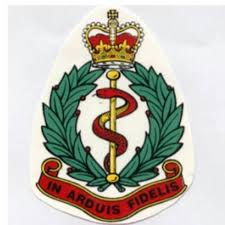
Reginald James Giddings

Royal Army Medical Corps
88th Field Ambulance
Private 473117
(formerly Private 1917)
 |  | |
| possibly known as 'James' Royal Army Medical Corps 88th Field Ambulance Private 473117 (formerly Private 1917) | ||
| Died 19th April 1918 |
Reginald Giddings' Parents | ||
|
Reginald James
Giddings (possibly known as James) was
the son of James Giddings (senior) and Harriet (née Sutton). James Giddings (father)James Giddings senior was born and raised in Devizes. At 2 years old, in the 1871 census, James senior lived at Caen Hill with 5 older siblings and his parents; his father was a clerk. Ten years later the family had moved to Sheep Street in Devizes and there was one further, younger brother. Harriet Sutton (mother)James’ mother Harriet was the daughter of cabinet maker and dressmaker parents from Bath. The Sutton family lived at 34 Oak Street in 1871 (Harriet was 7 months old) and at 2 Mount Pleasant (Walcot Parish, but where exactly?) in 1881. | ||
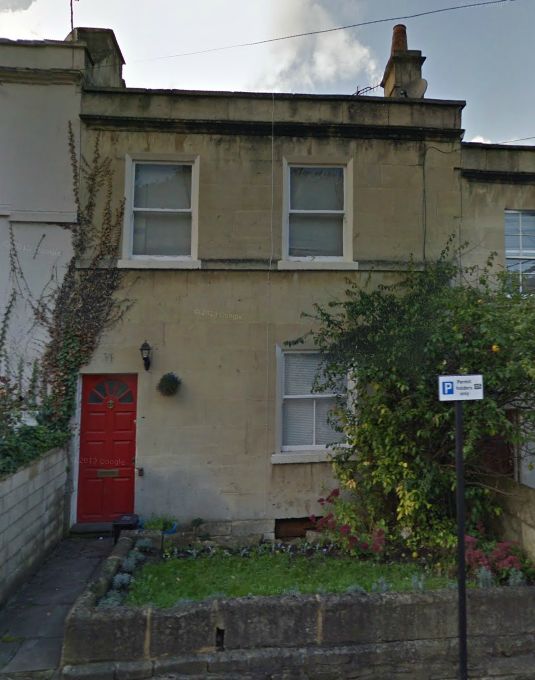 | ||
|
34 Oak Street; childhood home of James Giddings' mother |
The Giddings Family |
|
James (senior) and Harriet married in 1890 at St Peter’s
Church on the Lower Bristol Road in Bath. |
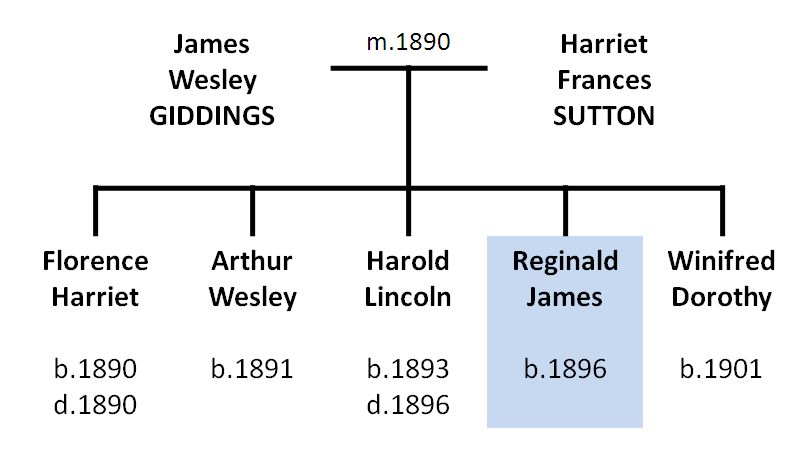 |
|
The first child, Florence, was born and died in
the same
year that James (senior) and Harriet married. Arthur was born the
following
year. N.B.: In the cases of both the father (James Wesley) and the
eldest son (Arthur Wesley), there are mixed references to the middle
name being spelled 'Wellesley'. The 1891 Bath
Directory lists the family at 1, Moorfields Terrace (which seems to
have been part of Moorland Road?). James (senior) was listed as a
‘carrier’s clerk’ and we know
from a story in the newspaper in 1892 that he worked for Gerrish &
Co,
whose premises were on Dorchester Street and backing onto the river,
where the
bus station now stands. That story concerned the theft of two sacks of
grain
from canal barges belonging to Gerrish & Co, with James Giddings
appearing
as a witness. Two men were sentenced to six months’ hard labour for
stealing
the grain. In 1893, the third child, Harold, was born. The 1895 Bath Directory lists the family at ‘Granby Villa’,
Cynthia Road (it is assumed that this name was disused and the house now bears
a number). In 1896 Harold died, and Reginald was born. The family’s address changed in this year to the
nearby Mayfield Road and a house called ‘Frankley Villa’. Again, it is not
known which of the houses in Mayfield Road may have borne this name. The 1897-8
Directories in any case have the family listed back at ‘Granby Villa’ again. In December 1898, James (senior) was again the witness in a trial;
this time a carter was being tried for cruelty to his horses and allowing them
to labour up Wells Road with a load of flour despite one having a sore under
its collar. James Giddings (described as ‘chief clerk’ at Gerrish & Co)
sided with the carter and testified that, in his experience of horses, he thought the load was not
excessive. The listings in the 1899-1901 Bath Directory show the family
at 26 Cynthia Road (perhaps this was formerly known as Granby Villa?) A mention in the newspaper on 3rd May 1900 showed James (senior)
successfully completing a first aid course with the St John Ambulance. A few
weeks later, he was in another court case relating to horse cruelty; this time
he was charged with allowing horses to be worked when in an unfit condition,
but the case against him was dismissed. |
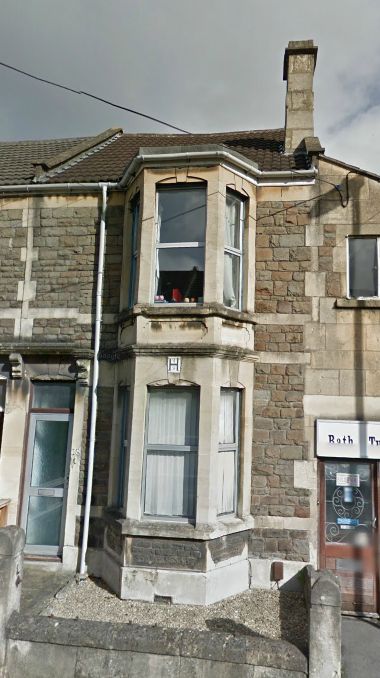 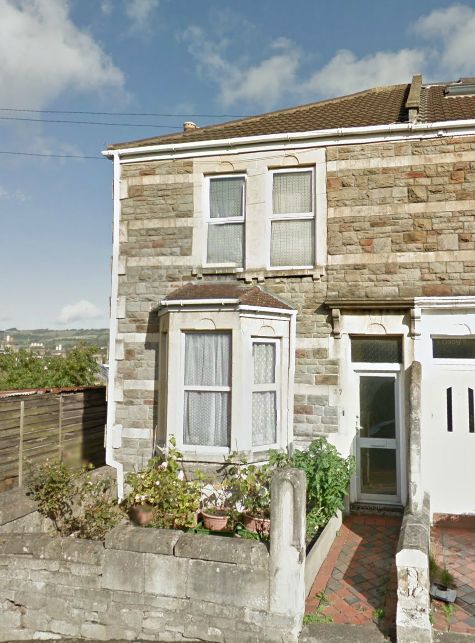 | ||
|
Houses in Cynthia Road that were home to the Giddings family: (L) number 28 (prior to 1904) and (R) number 37 (1905 onwards). |
|
James Giddings (senior) had been paying into a 'sick fund' (a kind of health insurance in the days before National Insurance contributions) during his working life; indeed he had previously been secretary of the Livingstone Sick Benefit Society (note that this probably originated in the Livingstone pub, which was at the time on the corner of Livingstone Road and Moorland Road). In July 1905 a claim was made against the sick fund on his behalf by his wife Harriet at a time when he was ‘of unsound mind’: From Bath Chronicle & Weekly Gazette - Thursday 6th July 1905: BATH COUNTY COURT. Thursday —Before his Honour Judge Gwynne James. A DIVIDING CLUB CASE. Harriet Frances Giddings, as receiver under an order of the High Court
of Justice of James Wellesley Giddings, a person of unsound mind, brought an
action against John and William Rice, as trustees of the Livingstone Sick Benefit
Society, Twerton; she asked for an injunction to restrain the defendants from
expelling Giddings from the society, and also claimed ten weeks' sick pay at
10s. weekly from December 27th, 1904, to March 7th, 1905,
and also ten weeks sick pay at 5s. a week from March 7th to May 16th.
Mr. R. H. Carpenter, of the firm of Messrs. Benson, Carpenter and Co., appeared
for the plaintiff, and Mr. E. B. Titley for the defendants. Mr. Carpenter said Mr. Giddings was a member of the society for some time, and was once its secretary. On the 31st October, 1903, he was removed to Wells Asylum, had remained there ever since, and was likely to [die] there. This society was not under any Act of Parliament, and it was not registered. The society, feeling he was burden on them, decided to get quit of him, passing a resolution which amounted to an expulsion, and the question was whether they were so justified in expelling him. The minutes of the society were handed to the Judge, who read them. It appeared that after paying Mr. Giddings twenty weeks sick pay the committee decided to offer Mrs. Giddings £5 in settlement of any further claim with the exception of death payment, but she declined it, and the committee then resolved that no further contributions should be received and no sick payment made. Mr. Titley said they were a yearly dividing society, and they wanted his Honour's decision on certain points which would arise. The Judge said the resolution of the society was really that the man was no longer a member. Mr. Carpenter said he understood the defendants relied on the rule which stated “The management committee are to have power over any matter not provided for in these rules.” Mr. Titley took the initial objection that the action should have been against the whole of the members, and not against the trustees, and after long argument his Honour decided to amend the claim to include the management committee. Mr. Titley then argued further points, and was replied to by Mr. Carpenter. His Honour, after retiring, gave an exhaustive judgment. He said Mr. Titley had argued that the injunction would not lie because it was entirely within the discretion of the managing committee whether Mr. Giddings should remain a member. He held that their decision that Mr. Giddings should not so remain was clearly illegal. The mere question whether an illness was temporary or prolonged was no ground for expulsion. Therefore the plaintiff had a right to the injunction. The more difficult question was whether member who was a lunatic had a right to draw sick pay. Mr. Titley had argued that permanent sickness was not contemplated, and that even if it were, insanity must be excluded. Rule 4 provided that after a sick member had drawn twenty weeks' sick pay, a period of thirteen weeks must elapse before he came again on the funds. This helped in his determination that the rules of the society did contemplate permanent illness. Then if the rules contemplated permanent illness, and did not contemplate insanity, it was an extraordinary thing that insanity was not expressly excluded. It was not. Then Mr. Titley contended that Rules 14, 15, 16, and 19 were absolutely inconsistent with any person receiving sick benefit who was insane. One of these rules provided that no person receiving pay should leave his home within certain hours except by permission of his medical adviser. In this case the man certainly could not do so, for the medical officer of the asylum must be taken to be his medical adviser. Therefore he did not think that that rule was inconsistent with including insanity. Then Rule 16 said any person in receipt of sick pay might be visited at any time between certain hours except in cases infectious disease, in which cases the medical certificate should be deemed sufficient. Supposing a man were not suffering from insanity nor from infectious disease, but from pneumonia, his medical man might forbid the visitors to see him on the ground that it would be dangerous to the patient, and in such cases he did not think the Society would contend the man should not receive sick pay. Therefore he held that the rules relied upon by Mr. Titley were not
sufficiently strong to exclude insanity from the rest of the rules. His Honour
said he was borne out in this opinion by the decision of Mr. Justice Blackburne
in Burden v. Eden. Therefore there would be judgment for injunction as prayed
for, and for £7 10s. arrears of sick pay, less any contributions due. He gave
full liberty to appeal, because it was quite a case in which such liberty
should be given. By agreement there would be no costs. His Honour added that
judgment was strengthened that the rules said the object of the society was
"to provide relief during sickness or other ailments."' James Giddings (senior) died in October 1906, when James was just 10.  Reginald's mother remained living at 37 Cynthia Road until 1913,
with the 1911 census listing her and the three living children, plus a
64-year-old widow who boarded with them, probably to help make ends meet,
although Arthur and James were listed as working; the former as a
furniture designer and the latter as a wallpaper hanger. |
|
James' place of work in Ipswich immediately prior to the war |
Reginald Giddings in WW1 | ||
Royal Army Medical Corps
Reginald Giddings’ military records are some of the few to survive - albeit somewhat damaged around the edges and by water. Many such records were destroyed in bombing in World War 2. His records allow us to piece together a very detailed record of his service, as far as the condition of these antiquated documents (and the deciphering of the handwriting!) will allow. 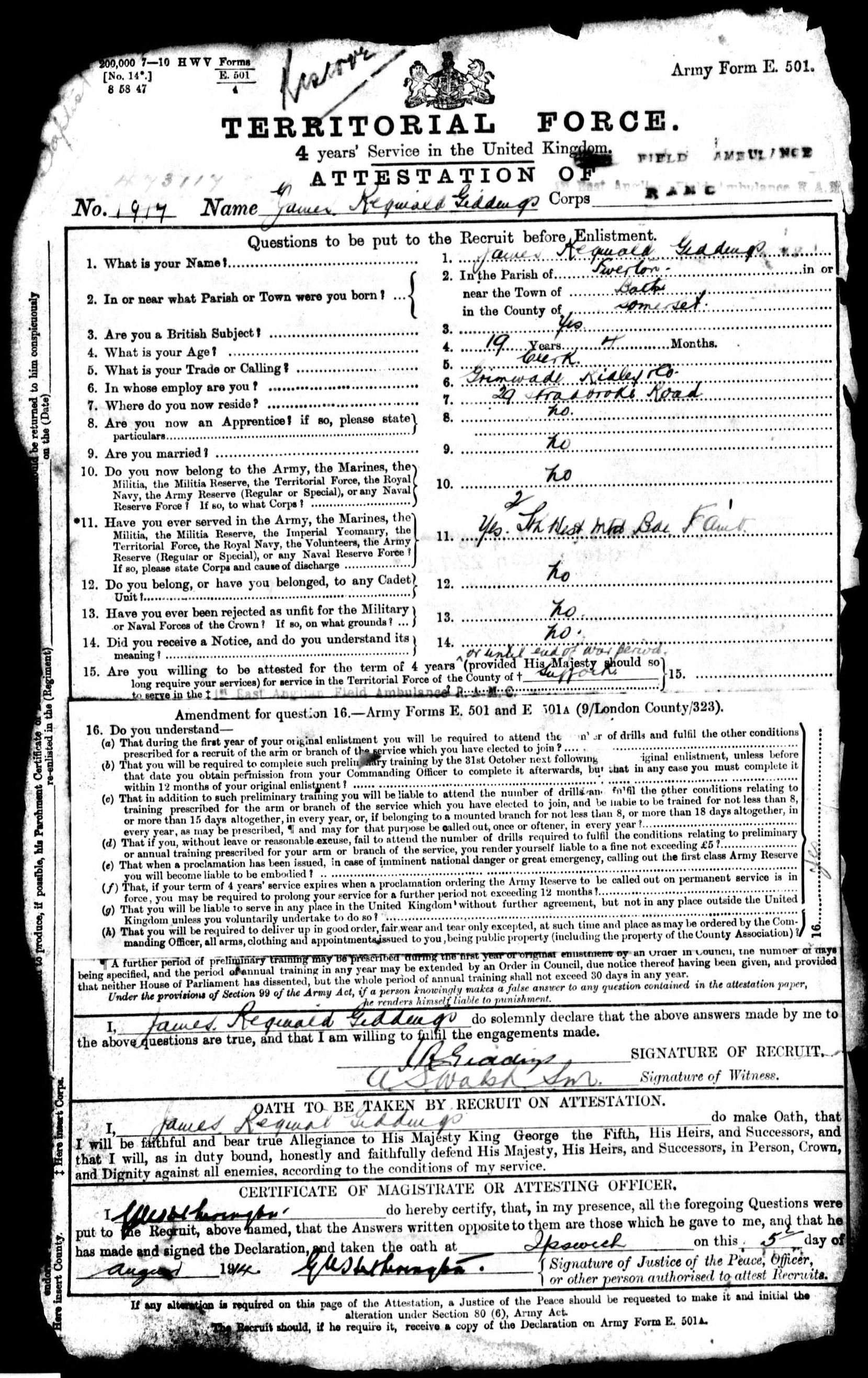 As his Attestation shows, Reginald joined up
at the outbreak of war on 5th August 1914 at the age of 19 years and
4 months. He signed up in Ipswich to
the Royal Army Medical Corps. Importantly, he signed ‘James
Reginald Giddings’, which leads us to believe that he was perhaps known by his second
given name. Also of interest is that he stated having previously served with the '7th South West Mounted Field Ambulance'; this would clearly have been during his time in Bath, showing that he was probably already a reservist (or had recently been so) at the outbreak of war, hence his speed in joining up. There is also a medical link with his father having been a member of St John Ambulance. He was 5 feet 9½ inches tall, with ‘normal’ vision and ‘good’ physical development. His address was given as 29 Stradbroke Road.
29 Stradbroke Rd, Ipswich On 3rd Dec 1914 he signed a form agreeing to service ‘in any place outside the United Kingdom’ (this was not a 'given' if a soldier had originally joined up to a Territorial unit), although he remained in Britain until 20th March 1915 Reginald was originally listed as Private 1917 with the 1st (Reserve) East Anglian Field Ambulance R.A.M.C.T. (probably the Territorial (T) section of the Royal Army Medical Corps). Later records also use the serial number Private 473117. The operations of Reginald's unit, from the Wartime Memories Project (http://www.wartimememoriesproject.com/greatwar/allied/ramc88fldambl-gw.php)
are in italics below, interspersed with the details provided by his personal
records: 88th (1st East Anglian) Field Ambulance, Royal Army Medical Corps served with 29th Division. The Division was formed in late 1914 from regular units arriving home from the most distant garrisons of Empire, having been replaced by Territorial units. The new division concentrated in the Stratford / Warwick / Leamington / Rugby / Nuneaton area in the first three months of 1915. They were training for France when orders arrived to prepare to depart for Gallipoli. They embarked from Avonmouth between the 16th and 22nd March 1915 sailing via Malta to Alexandria then on to Mudros in April. MediterraneanReginald's records show that he served abroad with the British Expeditionary Force in the Mediterranean from 21st March 1915; this ties in with the dates above.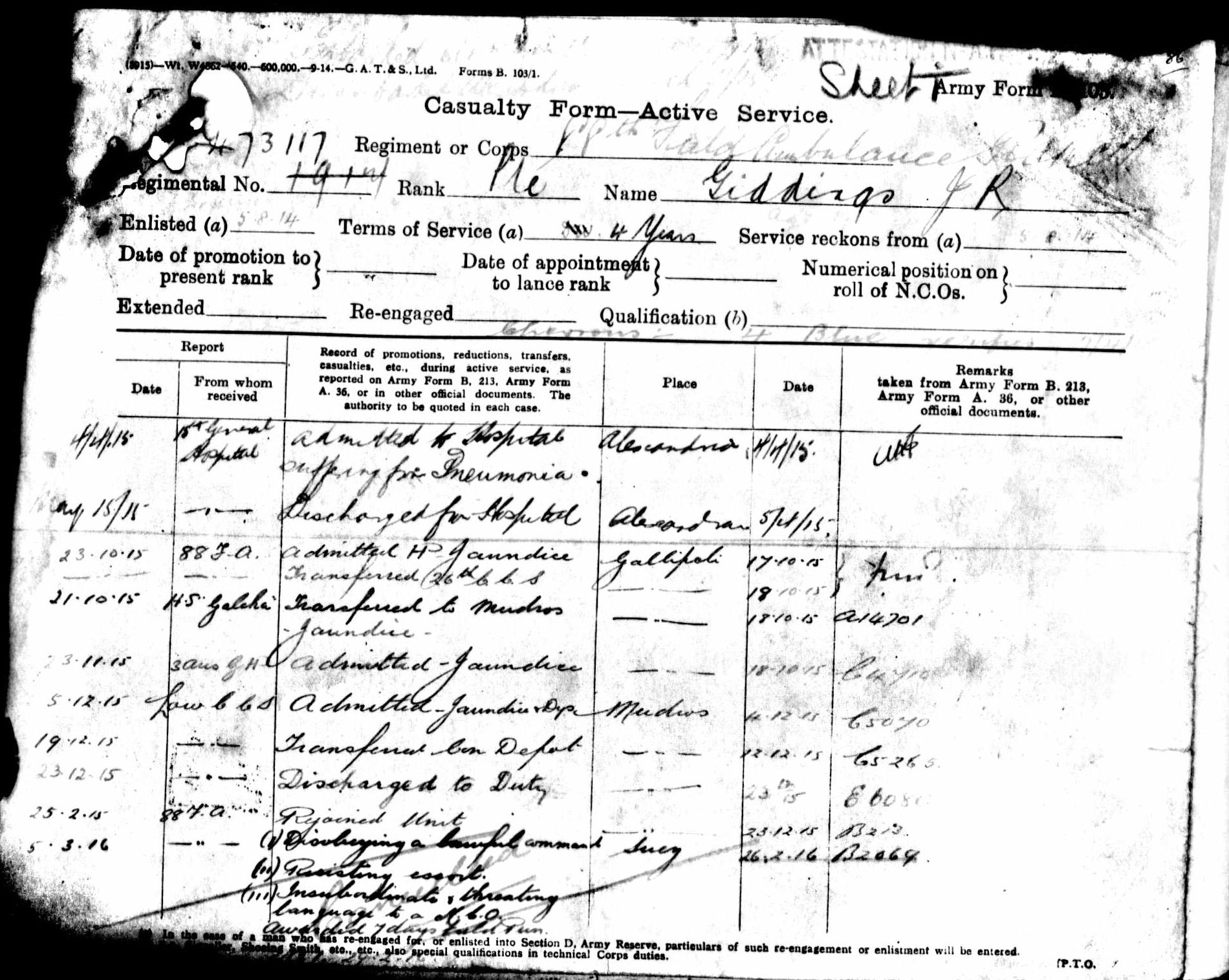 Reginald was
admitted to the 15th General Hospital in Alexandria on 4th
April 1915 suffering from pneumonia. On 15th May he was discharged.
This appears to mean that he was not involved with his unit in the following action: They
landed at Cape Helles, Gallipoli on the 25 April 1915 and were involved in
heavy fighting until the evacuation on the nights of the 7th and 8th of January
1916 when they returned to Egypt. On 17th October 1915 Reginald was again hospitalised – this time with jaundice – with the
88th Field Ambulance (his own unit) in Gallipoli and on 18th
he was transferred to 26th C.C.S. (casualty clearing station) and
thence, it seems, to Mudras (now usually ‘Moudros’ on the Greek island of
Lemnos). On 12th December he was
transferred [‘bon Depot’?] and then on 23rd December he was discharged
back to duty and rejoined his unit. 1. Disobeying a lawful command He was awarded 7
days’ total punishment, but there were soon other things on which to focus the mind: In
March 1916 they were sent to France, sailing to Marseilles and travelling by
train to concentrate in the area east of Pont Remy by the end of March. FranceReginald's records show that on 11th March 1916, the
unit embarked at Port Suez for a voyage to join the British Expeditionary Force
in France, disembarking on 23rd March in Marseilles.
On 27th June, Reginald was admitted to 88th Field Ambulance Alveolas [?] with an abscess and
discharged the following day. In
July they went into action in the Battles of the Somme. On 29th August he was back in 88th
Field Ambulance with ‘P n O’ [?] and transferred the following day to ‘D.R.S.’ [?].
On 5th September he was transferred to N.M.C.C.S. [a casualty clearing station] before being
discharged once more on 15th September. 2nd January 1917 saw Reginald given ‘standard leave and ration allowance’ for 11 days. 26th
March saw James admitted to 88th
Field Ambulance once more with a contusion of the left leg, discharged on 2nd
April. In
1917 they were in action in the The First, Second and Third Battle of the
Scarpe [April & May 1917] during the Arras Offensive Reginald was
admitted to hospital again 29th June with ‘P.n.O.’ [?] and transferred the same day to
D.R.S. [?], then discharged on 3rd July. On 15th August, James was transferred from Transport to
General Duty Section. [The
unit] then moved to Flanders and fought in the Battle of Langemarck [16th-18th
August], The Battle of Broodseinde [4th October] and The Battle of
Poelcapelle [9th October], before moving south for The Battle of
Cambrai [20th November – 7th December].
Following the Battle of Cambrai, James was granted leave and ration allowance from 7th –
21st December 1917 (15 days). In
1918 [the unit was] in action in The Battle of Estaires (9th-11th
April).
| ||
Reginald Giddings' Death | ||
The final entry in Reginald's Casualty Form was “Killed in Action” on 19th April 1918. This date does not relate to the given dates of any battle where the 88th Field Ambulance was engaged, but soldiers and medics anywhere near the front were at risk from shells, rifle fire etc. on an ongoing basis. | ||
Burial | ||
| Reginald's grave is at Godewaersvelde Cemetery, about 10 miles south of Ieper (Ypres). From the Commonwealth War Graves Commission: "The
cemetery was begun in July 1917 when three casualty clearing stations
were moved to Godewaersvelde. The 37th and the 41st buried in it until
November 1917, the 11th until April 1918, and from April to August
1918, during the German offensive in Flanders, field ambulance and
fighting units carried on the burials. ." | ||
Godewaersvelde cemetery [Image: www.cwgc.org] | ||
Godewaersvelde cemetery was visited in 2017 by Mike Sumsion, who has made many trips to the Western Front to find the resting places of Bath's fallen servicemen from WW1. He notes that, at Godewaersvelde cemetery, many of the CWGC headstones are lined up so close as to be touching each other, which indicates a mass grave, rather than an individual burial. Reginald Giddings' burial is in one such mass grave. Mike has kindly supplied a photo of Reginald Giddings' headstone:
The listing of the initials as 'J.R.' is another hint that Reginald was known as 'James'. | ||
Decoration |
|
Reginald Giddings was posthumously awarded the 1914-15 Star, the British War Medal and the Victory Medal. |
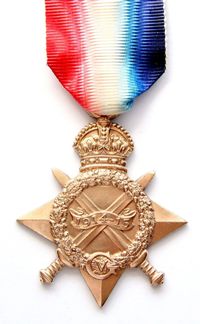 | 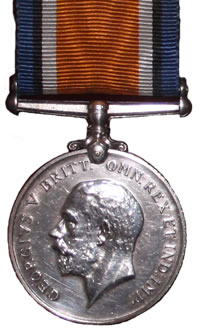 | 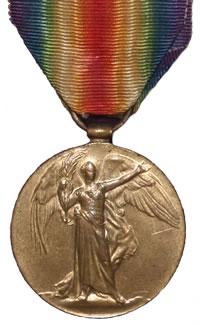 | ||
| British War Medal 1914-18 | Allied Victory Medal |
Reginald's medals were received by his brother Arthur: Army form W5090 was completed for James in October 1919 by his mother, in response to a missive from the RAMC officer in charge of records, who was charged with ‘disposing of the plaque and scroll in commemoration of’ Reginald Giddings . It confirms that Reginald was not married and that his mother Harriet and sister Winifred still resided at 37 Cynthia Road in Bath. Arthur
Giddings (brother) is listed as living at 45 Bolton Lane
in Ipswich and Harriet’s address (Cynthia Road) is
appended with the line ‘late 29 Stradbroke Road, Ipswich’ showing that
she had also lived at the address given by Reginald when joining up. The declaration is also signed by the Vicar
of South Twerton, a Mr Davies, who lived at 60[?] Maple Grove in Bath. |
Commemoration | ||
 In addition to his commemoration on the South Twerton School memorial, Reginald Giddings is commemorated as follows: | ||
|
Bath War Memorial See separate page for details of the Bath War Memorial. Reginald Giddings' inscription: |
 |
|
Ascension Church Memorial Reginald Giddings' name is inscribed on the oak tablet in the Ascension Church (see separate page for details of the Ascension Church Memorial). |
 |
Further Information |
A 'Famous' Relative: Robert Giddings
Reginald's nephew,
the son of his brother Arthur, was called Robert Giddings. He also
went to South Twerton School (which means that Arthur must have
returned from Ipswich to live in Bath?) and went on to become a
celebrated author, critic and university professor. His work includes
an
anthology of WW1 war poems (‘The War Poets’) and a broader anthology of
war writing
(‘Echoes of War’), but we do not know how much he knew of his own
family’s
experiences in WW1. His website is here. He died in 2012 and his obituary is here. Living relativesIt would be great to hear from any living relatives of Reginald Giddings. The family of Robert Giddings (above) would be one source of potential living relatives. The other is Reginald's sister Winifred, who was known to be alive in 1918, but of whom there is no further trace in Bath records. Please get in touch!If you have any further information on Reginald Giddings, or want to suggest corrections / improvements for this page, please use the Contact page to get in touch.All additions and further information will be credited appropriately. AcknowledgementsMany thanks to Mr David Carter for supplying the photograph of Reginald Giddings. |